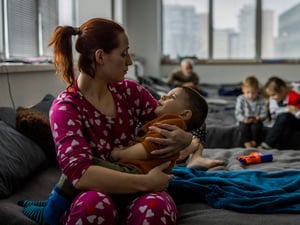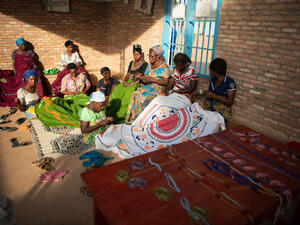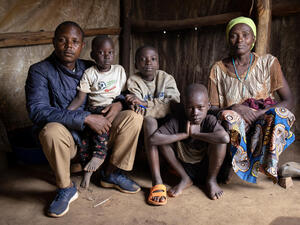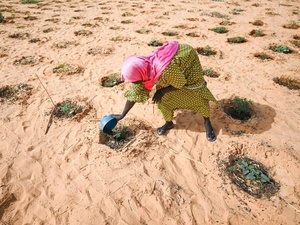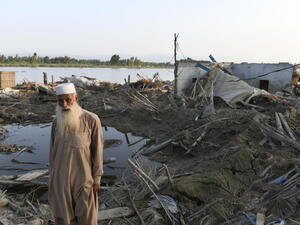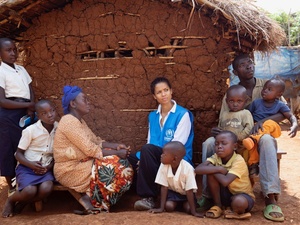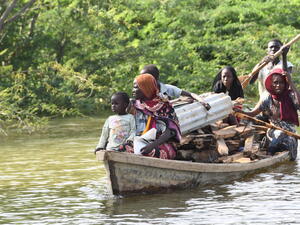1 per cent of humanity displaced: UNHCR Global Trends report
1 per cent of humanity displaced: UNHCR Global Trends report
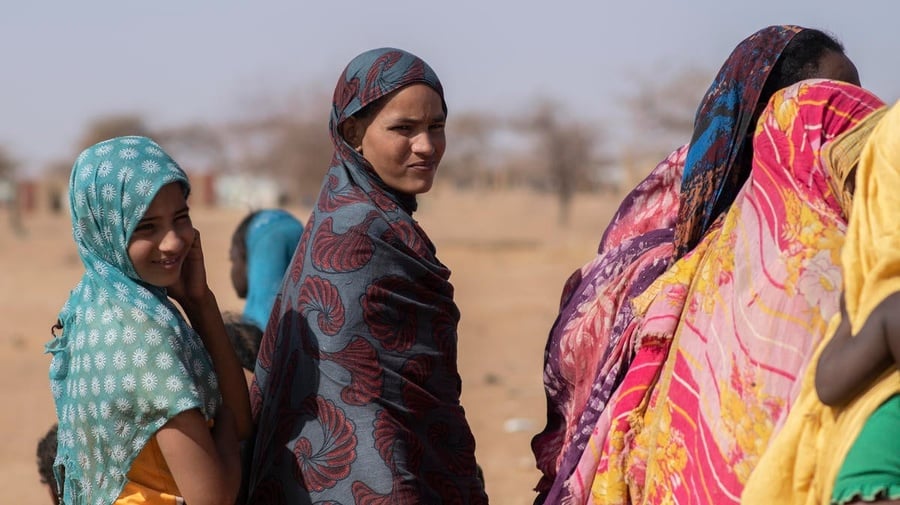
Malian refugees gather at an aid distribution point in Goudoubo camp, Burkina Faso, 3 February 2020.
UNHCR, the UN Refugee Agency, is today appealing to countries worldwide to do far more to find homes for millions of refugees and others displaced by conflict, persecution or events seriously disturbing public order. This is as a report released today showed that forced displacement is now affecting more than one per cent of humanity – 1 in every 97 people – and with fewer and fewer of those who flee being able to return home.
UNHCR’s annual Global Trends report, which comes two days ahead of 20 June World Refugee Day, shows that an unprecedented 79.5 million were displaced as of the end of 2019. UNHCR has not seen a higher total.
The report also notes diminishing prospects for refugees when it comes to hopes of any quick end to their plight. In the 1990s, on average 1.5 million refugees were able to return home each year. Over the past decade that number has fallen to around 385,000, meaning that growth in displacement is today far outstripping solutions.
“We are witnessing a changed reality in that forced displacement nowadays is not only vastly more widespread but is simply no longer a short-term and temporary phenomenon,” said UN High Commissioner for Refugees Filippo Grandi. “People cannot be expected to live in a state of upheaval for years on end, without a chance of going home, nor a hope of building a future where they are. We need a fundamentally new and more accepting attitude towards all who flee, coupled with a much more determined drive to unlock conflicts that go on for years and that are at the root of such immense suffering.”
UNHCR’s Global Trends report shows that of the 79.5 million who were displaced at the end of last year, 45.7 million were people who had fled to other areas of their own countries. The rest were people displaced elsewhere, 4.2 million of them being people awaiting the outcome of asylum requests, while 29.6 million were refugees and others forcibly displaced outside their country.
The annual increase, from a figure of 70.8 million at the end of 2018, is a result of two main factors. First is worrying new displacement in 2019, particularly in Democratic Republic of the Congo, the Sahel, Yemen and Syria – the latter now in its tenth year of conflict and accounting on its own for 13.2 million refugees, asylum seekers, and internally displaced people, fully a sixth of the world’s total.
Second is a better presentation of the situation of Venezuelans outside their country, many of whom are not legally registered as refugees or asylum-seekers, but for whom protection-sensitive arrangements are required.
And within all of these numbers is a multitude of individual and very personal crises. As many children (estimated at 30-34 million, tens of thousands of them unaccompanied) are among the displaced than, for example, the entire populations of Australia, Denmark and Mongolia combined. Meanwhile, the proportion of displaced aged 60 and above (4 per cent) is far below that of the world population (12 per cent) – a statistic that speaks to immeasurable heartbreak, desperation, sacrifice and being torn apart from loved ones.
8 things you need to know about forced displacement today
- 100 million people at least were forced to flee their homes in the past decade, seeking refugee either in or outside their countries. That’s more people fleeing than the entire population of Egypt, the world’s 14th most populous country.
- Forced displacement has almost doubled since 2010 (41 million then vs 79.5 million now).
- 80 per cent of the world’s displaced people are in countries or territories affected by acute food insecurity and malnutrition – many of them countries facing climate and other disaster risk.
- More than three-quarters of the world’s refugees (77 per cent) are caught up in situations of long-term displacement – for example the situation in Afghanistan, now in its fifth decade.
- More than eight of every 10 refugees (85 per cent) are in developing countries, generally a country neighbouring the one they fled.
- Five countries account for two-thirds of people displaced across borders: Syria, Venezuela, Afghanistan, South Sudan and Myanmar.
- Global Trends Report counts all major displaced and refugee populations, including the 5.6 million Palestine refugees who fall under the care of the United Nations Relief and Works Agency for Palestine.
- The 2030 Sustainable Development commitment of “leaving no one behind” now explicitly includes refugees, thanks to a new indicator on refugees approved by the UN Statistical Commission in March this year.
Note:
UNHCR’s Global Trends report is released in parallel with its annual Global Report, which reports on actions UNHCR is taking to address the needs of all who are forced to flee, as well as the world’s known stateless populations.
For additional information:
UNHCR’s Global Trends report and an accompanying package of multimedia assets are available on our media page. The report is subject to a worldwide embargo of no use before 0500 GMT on 18 June 2020.
For more information on this topic, please contact:
In Geneva:
- Andrej Mahecic, [email protected], +41 79 642 9709
- Babar Baloch, [email protected], +41 79 513 9549
- Marjanna Bergman, [email protected], +41 79 255 9271
- Charlie Yaxley, [email protected], +41 79 58 08 702
- Shabia Mantoo, [email protected], +41 79 337 7650
In New York:
- Joung-ah Ghedini-Williams, [email protected], +1 917 940 1212
- Kathryn Mahoney, [email protected], +1 347 443 7646
Media contacts – worldwide
To find additional spokespeople not listed here, visit our media centre.


